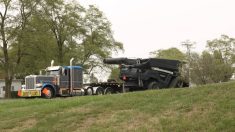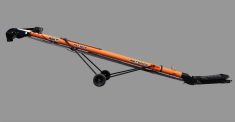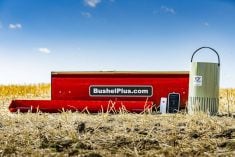Todd Botterill finishes the vertical tillage discussion with a look at rotary implements and whether compact disks make good fit
This is the final instalment of a five-part series on vertical tillage.
Rotary machines
This group includes several different kinds of machines and can be the most interesting to look at. It’s group that is near to my heart as it includes rotary harrows, which was the product that introduced me to vertical tillage many years ago. It also includes tools like aerators and stalk choppers, and combinations of the above.
Rotary tools were very popular in the beginning of vertical tillage and some units still are used a lot in some areas. Most rotary tools use the centripetal energy created by their spinning to fracture the soil and move it. Many people are surprised by how these tools can fracture soil well below their working depths in dry conditions due to the energy they create.
Read Also

Claas brings 1000 Series SP forage harvesters to Canada
In mid-August, Claas unveiled its new line of Jaguar forage harvesters at an event in Visalia, California, deep in the heart of that state’s dairy region.
Again, many farmers originally liked these machines but eventually wanted something that moved more soil, so combination tools were created. Some of the more popular units today are McFarlane, Reel Till and the Smart-Till from HCC.
It’s hard to write a list of pros and cons of such a diverse group. Rotary Harrows can handle tough conditions but aren’t very aggressive in hard soils. Stalk choppers don’t like stones or wet gumbo soils but do a great job of breaking up residue. This is a group worth looking at for your particular conditions.
Compact disks
Wait a minute, when I wrote earlier about vertical tillage categories I never mentioned compact disks, so why do I mention them now? It’s so I can make this one point: compact disks are not vertical tillage machines! I know they go fast like a coulter machine and leave a field smooth like a disk machine, but they are essentially a fancy tandem disk.
These machines run individually-mounted or paired blades on straight toolbars. This cuts down on the frame length. This shorter length allows for better contour following and easier mounting to a three point hitch in Europe, where these machines come from. They use a full-concavity blade on a tight spacing, sometimes with a cambered angle on the blades.
These machines will create a density layer just like any tandem disk. This doesn’t make them a bad machine. I have been very impressed with some of the jobs these machines have done. And if you don’t see the potential for real vertical tillage on your farm, then they may be a choice for you. I just want you making your decision with all the proper facts.
These machines do a great job of cutting up residue and mixing it. As with any disk machine, just beware of where all of that residue goes. What I’ve found very impressive is how they reconsolidate the soil to make a firm seedbed again. The cons I see of these tools is the cost (on many of them), their ability to handle wet holes and, with some units, their ability to handle high residue conditions. Due to the small amount of space between the gangs, these machines can plug between the rows of disks instead of between the blades.
Well, we’ve covered a lot of ground and I hope I’ve helped to make sense of the different machines offered out there. If it doesn’t make sense or if there a machine I haven’t covered you have questions about please feel free to contact me and I’ll help you the best I can. †














